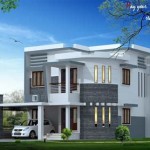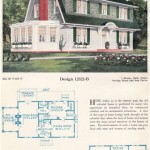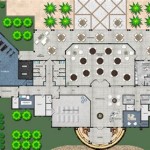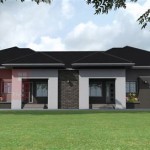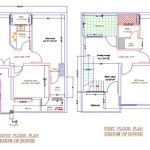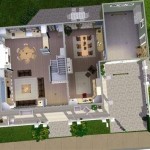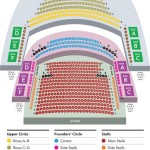Simple 10 Lakhs Budget House Plans In Kerala
Constructing a residence in Kerala within a budget of 10 lakhs presents a considerable challenge, yet it is achievable with meticulous planning, efficient resource management, and a focus on functional design. This article explores various strategies and considerations to successfully execute a house construction project within this constrained budget, specifically tailored for the housing market and construction practices prevalent in Kerala.
The primary factor influencing the feasibility of building a house within a budget of 10 lakhs in Kerala is the land availability. It is presumed that the land is already owned by the individual or family undertaking the construction. The cost of land acquisition is excluded from this budget. Further, the budget primarily focuses on the structural aspects of the house, possibly excluding extensive landscaping, compound walls, and lavish interior finishes.
The construction approach needs to prioritize simplicity and practicality. This typically involves opting for a single-story structure with a modest footprint. Multi-story constructions are generally more expensive due to increased structural requirements and material costs. The design should be space-efficient, minimizing wastage and maximizing the usable area within the defined square footage.
Key Considerations for Budget-Conscious House Construction
Several crucial considerations must be addressed to effectively manage resources and adhere to the budget. These include careful material selection, labor cost optimization, and simplified architectural design.
Material Selection: One of the most significant areas for cost reduction is the choice of construction materials. Traditional materials like laterite stone, which is readily available in certain regions of Kerala, can be more cost-effective than using bricks. Using locally sourced materials will reduce transportation costs, a factor that can significantly inflate the overall budget. Cement and steel should be procured from reputable suppliers, and buying in bulk can often lead to discounts. Alternatives to expensive cladding materials, such as simple plastering and painting, can also contribute to substantial savings. Roofing options also play a crucial role. While traditional tiled roofs are aesthetically appealing, they can be expensive. Considering alternative roofing materials like corrugated sheets or fiber cement sheets can drastically reduce the construction costs.
Labor Cost Optimization: Labor costs represent a substantial portion of the overall construction budget. Negotiating favorable rates with experienced and reliable construction workers is essential. Opting for a daily wage system rather than a contract-based system can offer more control over expenses. Supervising the construction process closely to minimize errors and rework is also critical. Avoiding unnecessary delays in the construction timeline minimizes labor costs. Utilizing skilled laborers who can handle multiple tasks efficiently contributes to reducing the number of workers required, further controlling expenses.
Simplified Architectural Design: A complex architectural design with intricate detailing will inevitably increase the construction cost. Opting for a simple square or rectangular floor plan minimizes construction complexity and reduces material wastage. Reducing the number of corners and complex angles simplifies the construction process, leading to faster completion and lower labor costs. Prioritizing essential features over purely aesthetic elements will help to stay within the budget. The architectural design should also consider natural lighting and ventilation to reduce the reliance on artificial lighting and air conditioning, contributing to long-term cost savings.
House Plan Considerations for a 10 Lakhs Budget
The design of the house should be tailored to maximize functionality within the limited budget. This requires careful planning of the layout, room sizes, and overall square footage.
A typical house plan within this budget might consist of two bedrooms, a living room, a kitchen, and a common bathroom. The total built-up area should ideally be between 600 to 800 square feet. It is essential to prioritize essential living spaces and avoid unnecessary features like large verandas or elaborate entrance halls.
The living room should be designed to be multi-functional, serving as a reception area and a family gathering space. Incorporating built-in storage solutions can help to maximize space and reduce the need for expensive furniture. The kitchen should be designed for efficiency, with a compact layout that allows for easy movement. The bedrooms should be of a reasonable size, accommodating essential furniture like beds and wardrobes. The bathroom should be functional and well-ventilated, with basic fixtures to keep costs down.
The design must also consider the climatic conditions of Kerala. Incorporating features like extended eaves to provide shade and cross-ventilation to maximize airflow can contribute to thermal comfort and reduce the need for artificial cooling. The orientation of the house should be carefully considered to minimize exposure to direct sunlight during the hottest parts of the day.
Cost-Effective Construction Techniques
Adopting cost-effective construction techniques is paramount to remaining within the budget. This includes utilizing appropriate foundation systems, wall construction methods, and roofing solutions.
Foundation: The type of foundation chosen can significantly impact the overall cost. A simple strip foundation is often sufficient for a single-story house on stable soil. However, if the soil conditions are poor, a more substantial foundation like a raft foundation may be necessary, which will increase the cost. Conducting a thorough soil investigation is crucial to determine the appropriate foundation type. Opting for a simpler foundation design, such as a rubble foundation, can be a cost-effective alternative in certain situations.
Wall Construction: Using locally available materials like laterite stone or hollow concrete blocks can reduce the cost of wall construction. These materials are typically less expensive than bricks and require less cement for mortar. Choosing a standard wall thickness can also help to minimize material wastage. Plastering the walls with a simple cement-sand mix is a cost-effective alternative to using expensive cladding materials. Incorporating reinforced concrete bands at regular intervals can enhance the structural integrity of the walls.
Roofing: The roofing system is a significant cost component. Opting for a simple sloping roof made of corrugated sheets or fiber cement sheets is a budget-friendly option. These materials are lightweight, easy to install, and relatively inexpensive. Properly insulating the roof can help to improve thermal comfort and reduce the need for air conditioning. Alternatively, using locally sourced clay tiles can be a more aesthetically pleasing option, but it will likely increase the cost. The roof design should also consider rainwater harvesting to conserve water and reduce water bills.
Finishing and Interior Design
The finishing touches and interior design elements should be kept simple and functional to minimize costs. Prioritizing essential features over purely aesthetic enhancements is key.
Flooring: Opting for simple and inexpensive flooring options like ceramic tiles or cement flooring is a good way to save money. These materials are durable, easy to maintain, and relatively inexpensive. Polished cement flooring is also a cost-effective option that can provide a modern and minimalist look. Avoiding expensive marble or granite flooring can significantly reduce the overall cost.
Doors and Windows: Using wooden doors and windows can be expensive. Consider using alternative materials like UPVC or aluminum, which are more affordable and require less maintenance. Simple designs with minimal ornamentation will further reduce the cost. Properly sealing the doors and windows can help to improve energy efficiency and reduce drafts.
Plumbing and Electrical: Keeping the plumbing and electrical layout simple and efficient is essential to minimize costs. Using standard fixtures and fittings will help to keep expenses down. Opting for energy-efficient lighting fixtures can reduce electricity bills. Hiring qualified and experienced plumbers and electricians is crucial to ensure the safety and functionality of these systems.
Legal and Regulatory Compliance
Adhering to all applicable legal and regulatory requirements is non-negotiable. This includes obtaining the necessary building permits and approvals from the local authorities.
Failing to comply with building regulations can result in fines and delays, which can significantly impact the budget. It is crucial to engage with a qualified architect or engineer who is familiar with the local building codes. The architect can assist with the preparation of the building plans and the submission of the necessary applications.
The building plans should comply with all applicable zoning regulations, setbacks, and floor area ratio requirements. It is also essential to obtain the necessary environmental clearances if required. Engaging with a lawyer who is familiar with property law can help to ensure that all legal requirements are met.
Project Management and Supervision
Effective project management and supervision are critical to ensuring that the construction project stays on track and within budget. This involves regular monitoring of progress, effective communication with the construction team, and proactive problem-solving.
Appointing a reliable and experienced contractor is crucial. The contractor should be responsible for managing the construction process, coordinating the various trades, and ensuring that the work is completed to the required standards. Regular site visits are essential to monitor progress, identify potential problems, and ensure that the construction is proceeding according to the plans. Maintaining detailed records of all expenses is also important for tracking the budget.
Communicating effectively with the construction team is essential to ensure that everyone is on the same page. Holding regular meetings to discuss progress, address any issues, and coordinate the various activities can help to prevent delays and misunderstandings. Being proactive in identifying and addressing potential problems can help to prevent costly rework and ensure that the project stays on schedule and within budget.

2bhk House Plan 10 Lakh Budget C T Home Designs

10 Lakhs Cost Estimated Modern Home Plan Everyone Will Like

10 Lakh Budget 1 Bhk Home Tour 700 Sqft Kerala

Rs 10 Lakh Kerala House Plan Home Design And Floor Plans 10k Dream Houses

Beautiful Low Budget Kerala Home Plan In 960 Sq Ft Under 10 Lakhs With 03 Bedrooms

Houses Based On Construction Cost 5 Lakhs 10

2 Bedroom Beautiful Home Plan For Just 10 Lakh In 612 Sq Ft Kerala Planners

10 Lakhs Budget House Plan

10 Lakhs House Plan Kerala Home Design 600 Sqft Low Cost Budget Haneed Anugrahas

10 Lakhs Budget 2 Bedroom Kerala Home In 700 Sqft With Free Plan Planners

